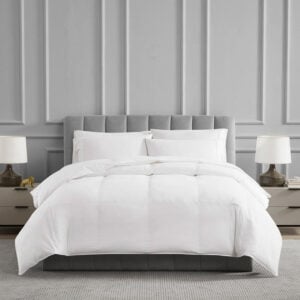The Ultimate Guide to Understanding Theta Binaural Beats
Unlocking the Power of Theta Binaural Beats
What are Theta Binaural Beats?
Theta Binaural Beats are unique sound waves designed to align your brainwaves with the Theta brain state, promoting deep relaxation, enhanced meditation, and boosted creative thinking. By listening to audio tracks embedded with these beats, you encourage your brain to naturally produce Theta waves, which oscillate within the 4-8 Hz frequency range. Embracing the concept of what Theta Binaural Beats can offer is the first step toward a more tranquil and mindful existence.
In this guide, we’ll explore the intricacies of Theta Binaural Beats and unveil five remarkable benefits that await you in 2025.
How Do Theta Binaural Beats Work?
At the core of Theta Binaural Beats is a fascinating auditory effect. Here’s a breakdown of how it functions:
1. Frequency Differentiation: When you listen to two slightly different frequencies—say, 300 Hz in one ear and 310 Hz in the other—your brain perceives a third tone, known as a binaural beat. This beat corresponds to the difference in frequency, which, in this example, would be 10 Hz.
2. Superior Olivary Complex Interaction: The brain’s Superior Olivary Complex processes these varying frequencies, allowing you to perceive the binaural beat and prompting your brain to synchronize with it.
3. Frequency Following Response: This phenomenon, called entrainment, encourages your brain to align itself with the frequency of the binaural beat. If the beat resides within the Theta range (4-8 Hz), your brain starts producing more Theta waves, ushering you into a state of relaxation and creativity.
Incredible Benefits of Theta Binaural Beats
Listening to Theta Binaural Beats can offer a plethora of remarkable advantages:
1. Enhanced Meditation
Theta waves are frequently experienced during meditation. Utilizing Theta Binaural Beats can significantly hasten your ability to enter a meditative state, making it easier to experience the profound benefits of mindfulness.
2. Deep Relaxation
Theta waves are synonymous with deep relaxation. When you reach the Theta state, feelings of tranquility wash over you, allowing the stress of daily life to melt away.
3. Improved Focus
Meditating while listening to Theta waves can sharpen your focus, enabling you to stay present and engaged. This heightened state of awareness can be incredibly beneficial both personally and professionally.
4. Stress Reduction
Research supports that stimulating Theta brainwave activity can considerably diminish anxiety levels and promote an overall sense of relaxation. A study published in the Journal of Alternative and Complementary Medicine found that college students who engaged with Theta Binaural Beats saw notable reductions in stress (1).
5. Boosted Creativity
Theta waves are closely linked to enhanced creativity and intuition. When your brain is tuned to the Theta frequency, you may find new ideas flowing effortlessly. Many artists and writers incorporate Theta Binaural Beats to overcome creative blocks, tapping into a reservoir of inspiration.
Unraveling the Science Behind Theta Binaural Beats
Types of Brain Waves
To grasp the impact of Theta Binaural Beats, it’s essential to understand the spectrum of brain waves:
– Delta (0.1–4 Hz): Deep sleep and restoration.
– Theta (4–8 Hz): Promotes deep relaxation and meditation.
– Alpha (8–13 Hz): Relaxation and calmness during restful states.
– Beta (13–30 Hz): Active thinking and focus.
– Gamma (>30 Hz): High-level cognitive functions.
The Effects of Theta Brain Waves
Theta brain waves are fascinating due to their association with beneficial mental states, such as:
– Deep Relaxation: Studies indicate that Theta waves can significantly alleviate stress, as evidenced by reduced anxiety levels in participants using Theta Binaural Beats (2).
– Quality Sleep: Preliminary research suggests that engaging with Theta frequencies before sleep can enhance sleep quality and duration.
– Facilitating Meditation: Listening to a 6 Hz Theta Binaural Beat for just ten minutes can encourage a meditative state (3).
– Fostering Creativity: Increased Theta activity is linked to enhanced creative insights during problem-solving tasks (4).
How to Use Theta Binaural Beats Effectively
Getting the most out of Theta Binaural Beats requires the right approach:
1. Listening Methods: Always use stereo headphones or high-quality earbuds to ensure the distinct frequencies reach each ear. Various audio tracks are available across platforms like Calm and YouTube.
2. Optimal Duration: Begin with 10-15 minute sessions and gradually extend to 30-60 minutes as comfort grows.
3. Create a Welcoming Environment: Find a quiet, comfortable space free from distractions. Consistency in your practice will enhance the benefits over time.
Best Practices for Listening to Theta Binaural Beats
Here are some practical tips:
– Set the Mood: Dim the lights and eliminate outside noise to create a calming atmosphere.
– Be Consistent: Make listening to Theta Binaural Beats a part of your routine—whether daily or weekly—to help your brain adapt.
Conclusion: Embracing the Power of Theta Binaural Beats
In summary, Theta Binaural Beats represent a fascinating auditory tool capable of reshaping your mental and emotional health. From facilitating meditation to enhancing creativity and promoting restful sleep, the benefits are profound and well-supported by research.
Incorporating Theta Binaural Beats into your everyday life can revolutionize your approach to relaxation and well-being. Remember, consistency is key, and always ensure you’re in a comfortable setting while listening. Should any concerns arise, consulting a healthcare professional is advisable.
Discover the transformative potential of Theta Binaural Beats today, and unlock a brighter, more peaceful version of yourself.

















